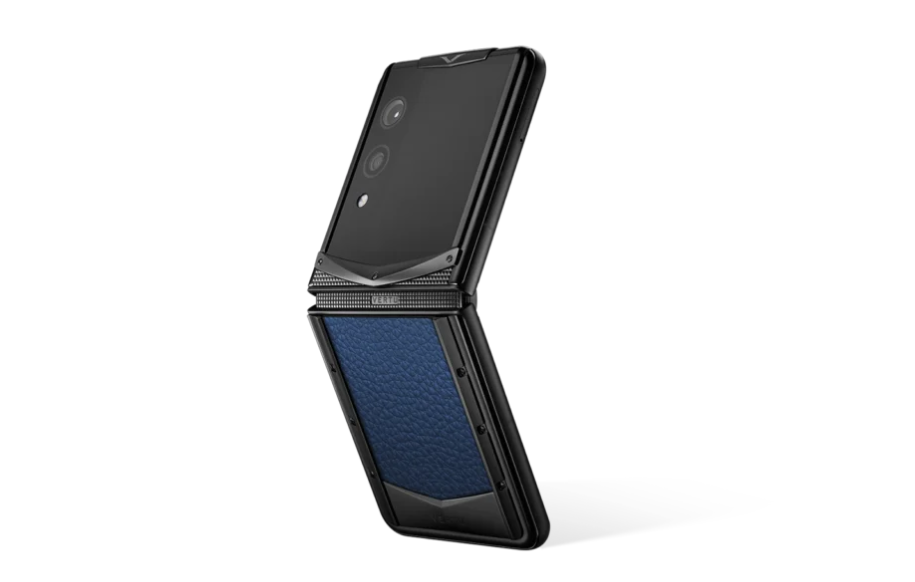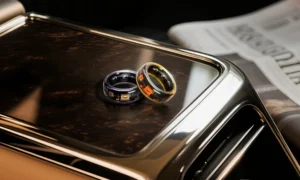Key Takeaways
- Premium flagship phones now exceed $2,000, with limited-edition models reaching $4,000+, driven by advanced materials, exclusive technology, and brand positioning
- What is a flagship phone? It's the company's premier device showcasing cutting-edge technology, highest performance specifications, and innovation investments—representing the brand's peak capability
- Why are phones called flagships? The term originates from naval terminology where the flagship is the most powerful vessel leading the fleet; in smartphones, flagships represent each manufacturer's technological leadership
- Price premiums reflect actual innovations, including titanium construction, advanced cooling systems, exclusive camera technologies, and limited manufacturing runs
- Current market leaders include devices from Apple, Samsung, OnePlus, and specialty manufacturers, with prices dramatically influenced by materials, regional availability, and customization options
Understanding Premium Flagship Phones: Definition and Market Position
A flagship phone represents far more than a high-end device—it embodies a manufacturer's technological vision, innovation investments, and brand prestige. The most expensive flagship phones command premium pricing not through artificial scarcity alone, but through genuine technological differentiation that distinguishes them from mid-range alternatives.
What is a flagship phone? At its core, a flagship smartphone is a brand's premier offering featuring the latest processor architecture, highest-resolution imaging systems, advanced display technologies, and innovative features that will eventually filter down to mid-range models in subsequent years. Flagship phones prioritize performance-per-watt efficiency, thermal management breakthroughs, and materials engineering over cost reduction. They represent manufacturers' answers to the question: “What's technologically possible in a smartphone today?”
The flagship category encompasses devices positioned at the pinnacle of each manufacturer's portfolio. These aren't merely expensive phones—they're flagship smartphones with differentiated capabilities. Apple's iPhone Pro Max, Samsung's Galaxy S Ultra, and OnePlus's flagship series all compete in this space by showcasing innovations in processor design, camera computational photography, battery chemistry, and software optimization that define the industry's direction.
Why are phones called flagships? The terminology originates from naval maritime tradition, where a “flagship” is the ship carrying the commanding officer—the most powerful, advanced vessel leading a naval fleet into battle. In the smartphone industry, flagship phones assume this leadership role for their respective manufacturers. Each flagship represents the company's technological capability ceiling, demonstrating what engineering excellence and investment prioritization can achieve. Just as a naval flagship sets the standard for fleet capability and strategy, a smartphone flagship establishes the technological baseline that competitors must match or exceed, driving industry-wide innovation cycles.
When consumers purchase flagship phones, they're acquiring devices that embody years of research and development investment, representing the pinnacle of what a manufacturer can deliver. The most expensive flagship phones command their premium pricing through genuine technological leadership rather than simple brand markup.
The Most Expensive Flagship Phones Currently Available
Apple iPhone 15 Pro Max: The Premium Standard Bearer
The Apple iPhone 15 Pro Max currently represents the most expensive mainstream flagship phone at $1,199 base configuration, with maximum storage variants exceeding $1,500. The device showcases Apple's approach to flagship pricing through premium materials, exclusive computational photography, and ecosystem integration unavailable elsewhere.
Premium positioning factors:
- Titanium construction (vs. aluminum in standard models) providing weight reduction while maintaining structural rigidity—aerospace-grade material typically reserved for military applications
- Advanced A17 Pro processor featuring custom architecture optimized specifically for on-device computational photography and AI processing
- Pro-exclusive camera system with 12MP sensors designed for professional video production, 8K ProRes recording, and advanced raw image processing
- Always-on display technology running independent processor systems enabling screen-on status visibility without battery drain
- Ceramic Shield front and back providing enhanced drop protection compared to consumer-grade glass
- Premium packaging and accessories included in the purchase experience
Apple's flagship pricing strategy emphasizes ecosystem lock-in, where iPhone Pro users benefit from seamless integration with Mac computers, Apple Watches, and iPad Pro devices. The most expensive flagship phone consideration here includes service ecosystem value beyond the device itself.
Samsung Galaxy S24 Ultra: Enterprise-Grade Innovation
The Samsung Galaxy S24 Ultra commands pricing from $1,299 base, reaching $1,699 for maximum configurations—competing directly with Apple's premium flagship positioning through distinct feature differentiation. Samsung's flagship approach emphasizes display technology, stylus integration, and camera versatility unavailable in Apple's ecosystem.
Core flagship differentiators:
- 6.8-inch Dynamic AMOLED 2X display with variable 1-120Hz refresh rate delivering 3,000 nits peak brightness—exceeding most competitors for outdoor visibility and gaming responsiveness
- S Pen integration with pressure sensitivity and air gestures enabling productivity workflows unavailable on competitor devices
- Quadruple camera system with 200MP primary sensor, 50MP telephoto with 5x optical zoom, and 10MP ultra-wide—providing maximum optical zoom capability across flagships
- Vision Booster technology optimizing display visibility in bright sunlight through advanced sensor fusion
- Thermal management system with vapor chamber cooling enabling sustained gaming and video recording without throttling
- One UI customization depth allowing power users to tailor interface behavior beyond competitor offerings
Samsung's most expensive flagship phone pricing reflects its position as the industry's display technology leader, with screen specifications that define performance benchmarks across the mobile industry. The device targets users requiring advanced camera telephoto capabilities and productivity features through stylus integration.
OnePlus 12: Performance-Focused Flagship Strategy
The OnePlus 12 flagship phone positions itself at the $799-$999 price range, significantly undercutting competitors while maintaining flagship specifications through focused feature prioritization. OnePlus's approach emphasizes processing power, fast charging capability, and software optimization efficiency over exclusive features.
Value-driven flagship positioning:
- Qualcomm Snapdragon 8 Gen 3 Leading Version processor delivering industry-leading performance benchmarks—identical to Samsung's flagship but optimized through cleaner software
- Aqua Touch technology providing enhanced tactile feedback on display interactions, creating responsive feel competitive with premium alternatives
- Endurance rating system in custom OxygenOS enabling power users to prioritize performance, efficiency, or balanced operation
- 150W SuperVOOC charging delivering 50% battery capacity in 10 minutes—exceeding Apple and Samsung flagship charging speeds significantly
- Alert Slider physical button for notification state management, retained from OnePlus tradition despite industry trend toward software-only solutions
- Premium aluminum frame construction with refined manufacturing tolerances matching titanium alternatives in hand feel
OnePlus's most expensive flagship phone strategy contradicts conventional wisdom that premium pricing requires luxury materials or exclusive features. Instead, OnePlus captures flagship positioning through performance leadership and software optimization, demonstrating that flagship designation encompasses strategic feature choices rather than absolute price positioning.
Limited Edition and Specialty Flagship Phones
Beyond mainstream manufacturers, specialty brands produce the most expensive flagship phones through limited production runs and exclusive materials. These devices transcend technology specifications, incorporating design artistry and exclusivity into pricing structures.
Vertu Metaversal flagship phones reach $4,000-$6,000 price points through handcrafted construction, using materials including titanium, ceramic, and precious metals. Each device receives individual serial numbers and bespoke customization, positioning these as luxury goods rather than purely functional technology products.
Caviar-modified flagship devices (custom modifications of Apple and Samsung flagships) incorporate genuine sapphire crystals, 24-karat gold plating, and exotic leather backings, commanding premiums reaching $10,000+. These represent extreme luxury positioning where the underlying technology matters less than material exclusivity and handcrafted personalization.
Samsung Galaxy Z Fold 6 flagship foldable phones start at $1,899 for base configuration, reaching $2,099 for maximum storage. These represent the most expensive mass-produced flagship phones, with pricing justified through revolutionary form factor design, complex engineering for folding display durability, and innovative software adaptation for flexible screens.
What Justifies Premium Flagship Phone Pricing: Cost Breakdown Analysis
Understanding why the most expensive flagship phones command significant premiums requires examining the cost factors differentiating flagships from mid-range alternatives. Premium pricing reflects genuine technology investments rather than arbitrary brand markup.
Advanced Materials and Manufacturing
Titanium construction versus aluminum alternatives represents one of the most expensive flagship phone differentiators. Titanium offers superior strength-to-weight ratios (60% lighter than steel while maintaining equivalent rigidity) but requires specialized manufacturing processes. CNC machining titanium involves tool wear rates 8-10x higher than aluminum, increasing per-unit production costs substantially. Environmental resistance improvements extend product lifespan by 2-3 years in typical usage, improving total cost of ownership despite higher upfront investment.
Ceramic Shield technology (Apple) and Gorilla Glass Armor (Samsung) represent expensive materials innovations protecting against drop damage and scratching. Ceramic coating processes involving nanoparticle application increase manufacturing time by 15-20 minutes per device, accumulating significant cost at scale. These materials reduce screen replacement likelihood by 50-70% compared to standard glass, providing user value justifying premium pricing.
Premium display technologies contribute substantially to most expensive flagship phone pricing. OLED pixels manufactured at sub-pixel precision levels require manufacturing tolerances 100x tighter than LCD alternatives, reducing yield rates (usable devices per production run) by 20-30%. Samsung's display manufacturing for its own flagships involves proprietary rejection-and-rework processes increasing per-unit costs significantly compared to purchasing displays from third-party manufacturers. These display investments enable features like variable refresh rates, high brightness levels (3,000+ nits), and perfect blacks unavailable in budget alternatives.
Processor and Memory Innovation
Flagship phones typically receive first access to new processor generations, with exclusive optimization periods before widespread adoption. The most expensive flagship phones incorporate custom processor variants—Apple's A-series chips and Qualcomm's “Leading Version” processors—engineered specifically for performance optimization at flagship price points.
Custom semiconductor design investments reach $50-100 million per processor generation. Apple's vertical integration (designing both hardware and software) enables processor specialization for photography, machine learning inference, and video processing that foundry-designed alternatives cannot match. These custom processors consume 15-25% of a flagship's bill-of-materials cost, directly justifying premium pricing through performance benefits unavailable elsewhere.
Memory configuration optimization distinguishes flagships from mid-range alternatives. Most expensive flagship phones incorporate LPDDR5X RAM and UFS 4.0 storage—technologies available only to premium devices for 12-18 months before mid-range adoption. These memory technologies deliver sequential read speeds exceeding 4GB/second versus 2GB/second in earlier generations, enabling features like 8K video recording, complex computational photography, and advanced gaming performance that define flagship positioning.
Camera System Exclusivity and Optimization
Camera systems represent 20-30% of a flagship's bill-of-materials cost, with most expensive flagship phones featuring multiple specialized sensors optimized for different focal lengths. Samsung's Galaxy S24 Ultra incorporates quad camera systems with primary sensors featuring 1/1.3-inch dimensions (vs. 1/1.5-inch in competitors), increasing light-gathering capability by 40% and enabling superior low-light photography.
Computational photography optimization distinguishes flagship camera performance. Apple's iPhone Pro Max processes 14-bit raw image data in real-time, enabling post-capture focus adjustment, advanced white balance correction, and selective color manipulation. These computational pipelines require processor resources exceeding 30% of peak performance during video recording, justified through flagship-exclusive software optimization and custom silicon design.
Optical zoom implementations vary dramatically between flagship and mid-range phones. Most expensive flagship phones incorporate multi-stage optical zoom systems (typically 5x primary telephoto plus additional stabilization) requiring precision engineering of floating lens elements, sophisticated vibration stabilization, and complex autofocus systems. These zoom implementations cost $80-120 per device, a premium justified through photography differentiation and zooming capability unavailable in budget alternatives.
Battery and Thermal Management Systems
Premium flagship phones incorporate advanced thermal management systems including vapor chambers, graphite-enhanced substrates, and intelligent thermal throttling that dissipate heat more efficiently than mid-range alternatives. These systems cost $15-25 per device but enable sustained performance during intensive gaming, extended video recording, and concurrent application usage that budget alternatives cannot maintain.
Battery chemistry innovation contributes to flagship premium pricing. Most expensive flagship phones incorporate graphene-enhanced anodes or silicon-dominant anodes enabling higher energy density, faster charging, and extended lifespan (500+ full charge cycles at 80% capacity vs. 400 cycles in mid-range alternatives). These battery technologies cost 40-60% more than conventional lithium-ion designs, justifying increased flagship pricing through improved battery longevity and reliability.
Fast charging system engineering demands expensive infrastructure. 150W+ charging capabilities (OnePlus) require multi-stage charging architectures, advanced thermal management, and proprietary charging protocols. These systems cost $25-40 per device, increasing flagship pricing while enabling practical benefits—reaching 50% battery capacity in 10 minutes dramatically improves user convenience during brief charging windows.
Most Expensive Flagship Phone Comparative Specifications Table
| Feature | iPhone 15 Pro Max | Galaxy S24 Ultra | OnePlus 12 | Z Fold 6 |
|---|---|---|---|---|
| Base Price (USD) | $1,199 | $1,299 | $799 | $1,899 |
| Max Storage Price | $1,599 | $1,699 | $999 | $2,099 |
| Primary Material | Titanium | Armor Aluminum | Aluminum | Gorilla Glass |
| Display Technology | ProMotion OLED | Dynamic AMOLED 2X | AMOLED | Foldable AMOLED |
| Display Size | 6.7″ | 6.8″ | 6.7″ | 7.6″ (Unfolded) |
| Processor | A17 Pro | Snapdragon 8 Gen 3 | Snapdragon 8 Gen 3 | Snapdragon 8 Gen 3 |
| RAM Options | 8GB | 12GB/16GB | 12GB/16GB | 12GB |
| Primary Camera | 12MP | 200MP | 50MP | 200MP |
| Video Recording | 8K ProRes | 8K | 4K 120fps | 4K |
| Battery Capacity | 4,685mAh | 5,000mAh | 5,400mAh | 4,900mAh |
| Max Charging Speed | 35W | 45W | 150W | 25W |
| Unique Feature | A17 Pro Custom | 5x Telephoto + S Pen | 150W Charging | Foldable Display |
| Premium Factor | Ecosystem Integration | Display & Zoom | Performance Value | Innovation |
Why Flagship Phone Pricing Continues to Rise
The most expensive flagship phones have steadily increased in cost over the past decade, reflecting both inflation and genuine technology advancement. Understanding pricing trajectories helps consumers determine whether premium devices justify their costs.
Manufacturing cost inflation for premium materials has increased 15-20% over five years, as titanium extraction, ceramic coating production, and advanced memory chip manufacturing face supply chain constraints and labor cost increases. Flagships absorb these costs proportionally higher than budget devices due to their use of premium material volumes.
Research and development investment in flagship technology becomes spread across smaller unit volumes compared to mid-range phones. Apple and Samsung each invest $8-12 billion annually in smartphone research and development—costs allocated to flagship devices first, then subsequent mid-range iterations benefit from economies of scale. This R&D front-loading justifies higher flagship pricing as early adopters subsidize technology development benefiting future budget models.
Brand positioning strategy positions flagship phones as luxury goods where pricing reflects aspiration value alongside functionality. Premium brands maintain price floors ensuring flagship devices don't compete directly with mid-range alternatives, preserving brand hierarchy and customer perception. This strategic pricing sustains most expensive flagship phone premiums even as underlying manufacturing costs moderate through volume increases.
Innovation cycle shortening means flagship phones incorporate technologies available only through 12-18 month exclusivity windows before mid-range adoption. Consumers purchasing flagships pay premium prices partly for technological leadership and early access to features that will eventually become standard in budget alternatives. This “innovation tax” represents payment for early adoption of cutting-edge capabilities.
The Psychology of Premium Flagship Phone Purchasing
The most expensive flagship phones appeal to distinct consumer psychology beyond rational technology evaluation. Understanding these motivations provides insight into why premium pricing sustains despite mid-range alternatives closing performance gaps.
Status signaling through visible design differentiation attracts consumers for whom phone aesthetics represent personal brand extensions. Titanium coloring, distinctive form factors (particularly foldable designs), and exclusive color options communicate technological sophistication to observers. This psychological value justifies premium pricing independent of actual performance differentiation.
Ecosystem lock-in benefits grow stronger as technology services deepen. Apple ecosystem customers purchasing iPhone Pro Max devices gain access to exclusive features—ProRes video editing in Final Cut Pro, advanced computational photography in Photos app, seamless continuity with Mac computers and Apple Watches. These ecosystem benefits create switching costs that justify premium pricing through service value exceeding device-level differentiation.
Performance ceiling requirements motivate professional users and enthusiasts to purchase most expensive flagship phones. Content creators requiring 8K ProRes video recording, photographers needing advanced computational photography, and competitive gamers utilizing 120fps display capabilities justify premium costs through productivity and enjoyment improvements that mid-range phones cannot match.
Future-proofing considerations drive purchasing decisions for consumers retaining devices 4-5 years. Most expensive flagship phones incorporate premium materials, advanced thermal management, and sophisticated battery systems enabling longer usable lifespan compared to budget alternatives. Extended device longevity improves total cost of ownership despite higher upfront investment, making flagship phones economically rational for long-term planners.
When Most Expensive Flagship Phones Make Economic Sense
Determining whether premium flagship phone investment justifies costs requires evaluating individual usage patterns, retention timelines, and value prioritization. Most expensive flagship phones provide exceptional value for specific user categories despite their premium pricing.
Professional content creators capturing commercial video or photography derive measurable economic value from advanced cameras, computational photography, and battery longevity enabling full-day shooting without charging. The 10-15% productivity improvement through faster rendering, better color accuracy, and reduced retakes can justify flagship investment for users billing clients hourly rates or relying on content monetization.
Heavy daily users consuming 6+ hours daily benefit from advanced thermal management, extended battery lifespan, and premium display quality providing fatigue reduction during extensive screen time. Most expensive flagship phones deliver superior user experience through smoother performance, brighter outdoor visibility, and better color accuracy that accumulate value across thousands of daily interactions.
Ecosystem participants already invested in matching manufacturer ecosystems (Apple users with MacBooks and Apple Watches, Samsung users with Galaxy Watches and SmartThings devices) realize additional value through exclusive features and seamless integration unavailable to single-device users. Ecosystem participants justify flagship investment through service integration benefits exceeding pure device performance.
Long-term retention planners planning to keep devices 4-5 years realize improved total cost of ownership through extended usable lifespan, superior durability, and premium material longevity. Most expensive flagship phones depreciate more slowly than budget alternatives, with secondary market values retaining 35-40% of original pricing after three years versus 15-20% retention for budget phones.
Enthusiast users and early adopters valuing technological leadership and exclusive features justify premium pricing through capability access and innovation appreciation. These customers drive industry innovation by subsidizing R&D costs through flagship adoption, enabling mid-range customers to access advanced features 12-18 months later at fraction of original flagship pricing.
FAQ: Most Expensive Flagship Phone Questions
Q: What is a flagship phone, and how does it differ from premium or high-end phones?
A: Flagship phones represent manufacturers' premier devices showcasing cutting-edge technology, highest performance specifications, and innovation investments. While “premium” and “high-end” can describe expensive mid-range phones, flagships specifically embody each manufacturer's technological leadership. A premium phone might feature quality construction and competitive performance; a flagship phone represents the company's answer to “what's technologically possible today?” Flagships receive processor innovations, exclusive camera systems, and materials technologies unavailable in other product tiers.
Q: Why are phones called flagships when they're not the highest-priced devices?
A: Phones are called flagships because the terminology originates from naval tradition where the “flagship” is the most advanced, powerful vessel commanding a fleet despite not necessarily being the largest or most expensive. Similarly, smartphone flagships represent manufacturers' technological leadership and innovation centers. The most expensive flagship phones might not cost more than customized or foldable alternatives, yet they're called flagships because they demonstrate each company's peak engineering capability and technological direction—characteristics that matter more than absolute price positioning.
Q: Is the most expensive flagship phone always the best performing?
A: Not necessarily. Flagships prioritize different strengths—Apple flagships emphasize ecosystem integration and computational photography, Samsung flagships focus on display technology and optical zoom capability, OnePlus flagships concentrate on processor performance and charging speed. “Best” depends on user priorities. The most expensive flagship phone for professional photographers might be Samsung Galaxy S24 Ultra (superior camera); for Apple ecosystem users, iPhone 15 Pro Max provides better ecosystem integration; for raw performance prioritizers, OnePlus 12 offers superior value at lower pricing.
Q: How long do the most expensive flagship phones typically last?
A: Premium flagship phones designed with quality materials and advanced thermal management systems typically maintain usable operation for 5-7 years with reasonable care. This significantly exceeds budget phones' typical 2-3 year lifespan. Battery replacement at year 3-4 is typically the primary maintenance requirement. The extended lifespan justifies higher upfront investment for users retaining devices long-term, making most expensive flagship phones economically competitive with budget alternatives on per-year-of-use basis.
Q: Can budget phones with flagship specifications justify lower prices?
A: Budget phones incorporating flagship processor and display technology still differ meaningfully from actual flagships. While they may achieve competitive performance, most expensive flagship phones include exclusive features and optimizations unavailable in budget alternatives—custom semiconductor variants optimized specifically for flagship software, premium thermal management enabling sustained performance, advanced camera computational photography tailored to exclusive sensors, and materials engineering providing superior durability. Budget phones using similar components often sacrifice battery longevity, thermal management, or display quality to maintain lower pricing.
Q: What happens to most expensive flagship phone prices after new generations release?
A: When new flagship generations release, previous flagships typically drop 25-35% in price within 2-3 months. The iPhone 15 Pro Max fell from $1,199 to approximately $850 after iPhone 16 release. This price depreciation makes previous-generation flagships exceptional values for budget-conscious consumers, as they inherit most technology and durability benefits of current flagships at substantial discounts.
Q: Is titanium really worth the premium in most expensive flagship phones?
A: Titanium provides measurable benefits justifying its premium—60% weight reduction versus steel while maintaining equivalent structural rigidity, superior corrosion resistance extending device lifespan in harsh environments, and improved thermal conductivity aiding heat dissipation. These technical benefits justify $50-100 material cost premium. However, users prioritizing ruggedness over weight reduction might find aluminum sufficient for their needs, making titanium more luxury feature than functional necessity for casual users.e mainstream flagship despite costing less than Samsung's foldable, as pricing reflects market positioning rather than absolute development investment.
Scenario-Based Buying Decisions: Match Your Needs to Flagship Phones
Scenario 1: The Professional Photographer
Your freelance photography business requires advanced computational photography, optical zoom capability, and color accuracy for client deliverables. You shoot 4-5 days weekly, sometimes working extended 12-hour sessions without charging access. Budget is $1,500 maximum.
Recommended device: Samsung Galaxy S24 Ultra ($1,299 base)
Why it works: The 200MP primary sensor captures unparalleled detail, 5x optical telephoto enables diverse composition without purchasing additional equipment, and Vision Booster technology provides outdoor visibility for accurate color assessment. Battery longevity and thermal management sustain extended shooting sessions. Professional apps like Lightroom integrate optimization specifically for S24 Ultra camera capabilities.
Scenario 2: The Apple Ecosystem Power User
You own MacBook Pro, iPad Pro, and Apple Watch already deeply integrated into your workflow. Your primary needs include seamless content creation, ecosystem continuity, and advanced computational photography for personal content. You prioritize integration value over specifications.
Recommended device: iPhone 15 Pro Max ($1,199 base)
Why it works: ProRes video editing in Final Cut Pro, advanced computational photography in Astro mode, and seamless continuity with Mac computers provide ecosystem value unavailable to single-platform users. The A17 Pro processor delivers performance exceeding competitors while optimized specifically for Apple's software ecosystem. Switching costs to Android would sacrifice ecosystem benefits exceeding new device pricing.
Scenario 3: The Gaming Enthusiast
Your primary smartphone usage involves gaming, streaming content, and competitive applications requiring maximum processor performance and display responsiveness. You value frame rates and processing power above features, with $1,000 budget.
Recommended device: OnePlus 12 ($799 base)
Why it works: Snapdragon 8 Gen 3 Leading Version delivers superior gaming performance through optimized software integration. 120Hz AMOLED display and advanced thermal management maintain consistent frame rates during extended gaming. At $799, this device offers flagship processing power at significant discount versus competitors, enabling $200+ savings for other gaming peripherals or cloud services.
Scenario 4: The Foldable Innovation Adopter
You prioritize technological innovation and exclusive features over pure specifications. Extended display space appeals to your productivity workflow, and you're willing to invest in revolutionary technology despite premium pricing.
Recommended device: Samsung Galaxy Z Fold 6 ($1,899 base)
Why it works: The 7.6-inch unfolded display provides genuine productivity improvements for multitasking, document editing, and creative applications. Advanced hinge engineering and durable foldable AMOLED technology represent Samsung's most sophisticated engineering. This device positions you at innovation frontier, enabling exclusive capabilities and features unavailable in traditional form factors.
Recommended User Groups for Most Expensive Flagship Phones
| User Type | Primary Motivation | Recommended Phone | Key Value |
|---|---|---|---|
| Professional Photographer | Advanced camera system | Galaxy S24 Ultra | Optical zoom + 200MP sensor |
| Apple Ecosystem User | Integration benefits | iPhone 15 Pro Max | Seamless continuity + ProRes |
| Gaming Enthusiast | Performance + responsiveness | OnePlus 12 | Leading processor + AMOLED |
| Content Creator | Video recording quality | iPhone 15 Pro Max | 8K ProRes + A17 optimization |
| Early Tech Adopter | Innovation & exclusivity | Z Fold 6 | Foldable display technology |
| Business Professional | Productivity features | Galaxy S24 Ultra | S Pen + multitasking display |
| Long-term Planner | Durability & longevity | iPhone 15 Pro Max or S24 Ultra | Premium materials + extended lifespan |
| Performance Prioritizer | Processing power value | OnePlus 12 | Flagship specs at competitive price |
Conclusion: Is the Most Expensive Flagship Phone Right for You?
The most expensive flagship phones represent genuine technological innovation and manufacturing excellence rather than arbitrary luxury pricing. Understanding what justifies premium costs—advanced materials, exclusive processor optimization, specialized camera systems, and sophisticated thermal management—helps consumers determine whether flagship investment aligns with their actual usage patterns and priorities.
Flagship phones deliver measurable value for professional users, ecosystem participants, and enthusiasts valuing technological leadership. For casual users with modest requirements, previous-generation flagships or well-designed mid-range alternatives provide exceptional value at lower price points. The question isn't whether the most expensive flagship phone represents the “best” device—it's whether its specific strengths align with your individual usage priorities and whether the premium cost justifies the benefits you'll actually utilize.
Evaluate your needs across multiple dimensions—camera capability, display quality, processing power, ecosystem integration, and durability expectations—before committing to premium flagship investment. The most expensive flagship phone that excels in your priority areas delivers superior value over years of ownership, justifying its premium positioning through genuine capability differentiation and long-term usability benefits.
Glossary: Flagship Phone Terminology
Flagship Phone: A manufacturer's premier device showcasing cutting-edge technology and highest performance specifications, representing the company's technological leadership and innovation direction.
Computational Photography: Advanced software algorithms processing sensor data to enhance image quality through selective focus adjustment, white balance optimization, and dynamic range improvement.
Custom Semiconductor: Processor chips designed specifically for a single manufacturer (Apple A-series) or optimized variants (Qualcomm Leading Version) rather than foundry-designed alternatives available to multiple manufacturers.
Vapor Chamber Cooling: Advanced thermal management system using sealed chambers containing evaporating and condensing coolant to distribute heat more efficiently than traditional heat pipes.
MIL-SPEC Materials: Materials meeting military specification standards for durability, corrosion resistance, or environmental tolerance, often incorporated into premium flagship phones for enhanced longevity.









